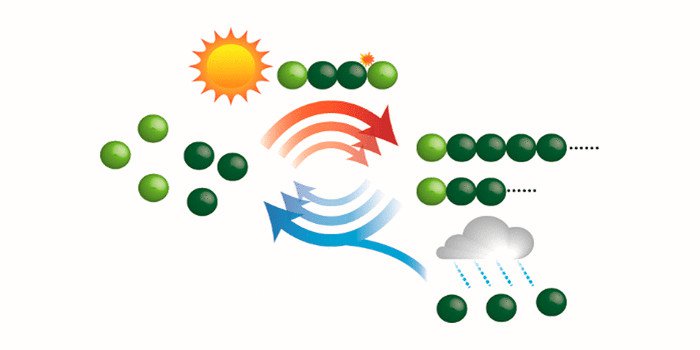
Feb. 23, 2018
Research Highlight
Making Polymers in a Day-Night Machine

"Fresh monomers were fed to the polymer/monomer mixture periodically by an automated “day–night machine” that was designed to simulate wet–dry cycles that would have been common on the prebiotic Earth."Image credit: Yu et al. (2017).
A new study examines the formation of long polymers with peptide backbones through an ester-mediated reaction pathway. The work expands on previous studies that have shown that peptide bonds can form in a prebiotic scenario via ester bond formation followed by ester-amide exchange in mixtures of amino acids and hydroxy acids. Using an automated ‘day-night machine,’ the team of researchers simulated wet-dry cycles (a scenario thought to be common on the prebiotic Earth) and studied how monomers were added to peptides during the ester-mediated elongation process. This included differences observed when continually adding amino acids and/or hydroxy acids into the mixture. The results provide insight into the formation of long polymers under conditions that may have been present on the early Earth, which could have been a crucial early step in the origins of life.
The study, “Elongation of Model Prebiotic Proto-Peptides by Continuous Monomer Feeding,” was published in the journal Macromolecules. The work was performed at the NSF/NASA Center for Chemical Evolution (CCE) at the Georgia Institute of Technology in Atlanta, Georgia. The CCE is a collaborative program supported by the National Science Foundation (NSF) and the NASA Astrobiology Program.